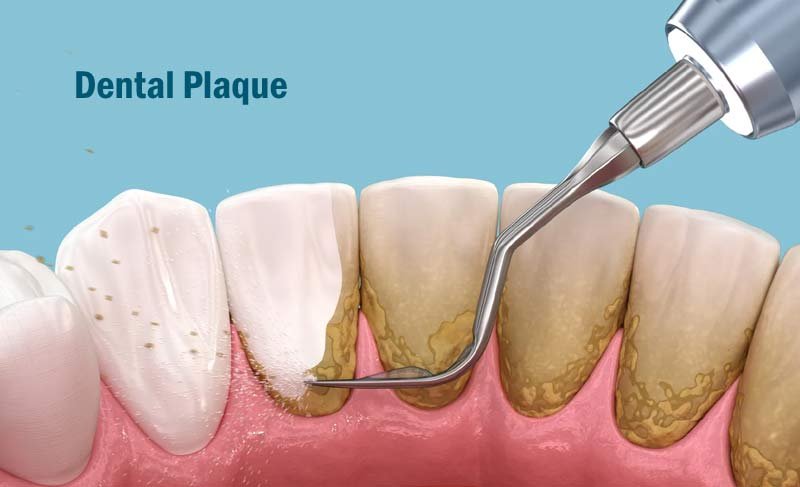
प्लाक तब विकसित होता है जब शक्कर, दूध, कोला, केक या चॉकलेट वाले खाद्य पदार्थ अक्सर दांतों पर जमा हो जाते हैं। मुंह में जीवित रहने वाले बैक्टीरिया इन खाद्य पदार्थों पर बढ़ते हैं, जिसके परिणामस्वरूप एसिड होता है। समय के साथ, ये एसिड दांतों पर आवरण को नुकसान पहुंचाते हैं जिसे इनेमल कहा जाता है, जिसके परिणामस्वरूप दांत सड़ जाते हैं। पट्टिका गम के नीचे दांत की जड़ों पर भी बढ़ सकती है और दांत का समर्थन करने वाली हड्डी के टूटने का कारण बनती है। तो रोगी को बैक्टीरिया की परतदार, परतदार परत आती है जो दांतों को खींचती है और सबसे अधिक दिखाई देती है जब दांतों को नियमित रूप से ब्रश नहीं किया जाता है। यदि आप जीभ के साथ अपने दांतों को स्केल करते हैं, तो आप इस पट्टिका को बनाने में सक्षम हो सकते हैं जो कुछ हद तक मोटे होते हैं और दांतों के पीछे की तरफ अधिक दिखाई देते हैं। डेंटल सर्जन दांतों को प्रभावित करने वाली गुहा और गुहा की सीमा का पता लगाने के लिए स्थानीय जांच और एक्स-रे करता है और तदनुसार स्केलिंग, फिलिंग, रूट कैनाल ट्रीटमेंट या कैप या क्राउन फिक्सेशन और शायद ही कभी दांत के निष्कर्षण के रूप में प्रबंधन की सलाह देता है।

